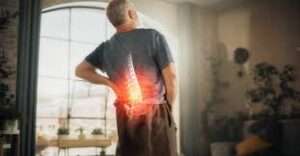Research and Clinical Trials
Brown-Séquard Syndrome (BSS) is a rare neurological disorder. It presents major difficulties for patients and doctors. Even though it’s uncommon, experts study BSS. Their goal? To enhance knowledge, treatments, and results for those affected.
Current Research Directions of Brown-Séquard Syndrome (BSS)

Experts look at ways to improve knowing and care for Brown-Sequard Syndrome. Some important things they study are:
- Neuroregeneration: Finding ways to help nerves regrow and fix damaged spinal cord areas, like using stem cells or growth factors.
- Rehabilitation Strategies: Exploring fresh rehab methods, like robotic therapy, virtual worlds, and electrical muscle nudges, to boost movement and living quality for BSS individuals.
- Pharmacological Interventions: For many, the study of medicines that address specific processes linked to spinal cord trauma is vital. This encompasses assessing inflammation-reducing drugs, substances that shield nerve cells, and medications that relieve pain.
- Surgical Innovations: Refined surgery techniques now enter via tiny cuts. New tools help decompress, secure the spine. Enhancing patient outcomes is key.
- Genetic Research: Genes may make some prone to BSS or impact treatment response. Genetic research aims to customize care for each person.
Ongoing Clinical Trials of Brown-Séquard Syndrome (BSS)
There are various clinical studies presently occurring. Their purpose is examining potential therapies for Brown-Sequard Syndrome. These trials look at safety, effectiveness, and if novel treatments are suitable for people. Some examples of what is being investigated include:
- Stem Cell Therapy Trials: Research explores stem cells’ ability to regrow nerves and improve function for those with Brown-Sequard syndrome. Clinical trials transplant these regenerative cells.
- Neurostimulation Studies: Scientists evaluate stimulating the spine with electrodes to ease pain and restore movement in Brown-Sequard syndrome patients. Neurostimulation studies target motor recovery.
- Drug Trials: Scientists carry out experiments to determine if drugs like growth factors, antioxidants, or neuroprotective compounds can treat BSS effectively. Their aim is to enhance brain function and life quality for patients.
- Rehabilitation Trials: Intensive therapy using modern tech and methods is assessed in trials. Researchers evaluate if these rehabilitation programs benefit BSS patients.
Preventive Measures of Brown-Sequard Syndrome
Though injuries causing Brown-Sequard Syndrome might seem hard to avoid, some steps can lower one’s odds. A few straightforward things:
- Safety Precautions: Follow safety precautions, such as always buckling up in autos. Use proper gear for sports. Don’t do risky stuff that could make you fall or get hurt.
- Maintain a Healthy Lifestyle: Eat well-balanced food to stay fit. Exercise daily to keep muscles strong and flexible. Don’t smoke and limit alcohol as these heighten injury risks.
- Home Safety: Modify your home to avoid falls or accidents. Add handrails, grab bars. Clear tripping hazards. Ensure adequate lighting in corridors, stairs.
- Stay Informed: Understand what signs reveal a spinal cord injury. Weak muscles, loss of feeling, or struggling with coordination – any of these could mean spinal harm. Don’t delay! If you or loved ones experience these issues, pursue medical care right away. Being informed and acting fast are key.
Support Groups and Resources of Brown-Sequard Syndrome
People with Brown-Sequard Syndrome face difficulties, yet they needn’t battle alone. Numerous groups, assets, and web networks exist. These offer data, direction, and backing to BSS patients and families. For instance, consider the following choices:
- Spinal Cord Injury Associations: There are groups aimed at helping those with spine injuries. They offer help, advice, and talk for better care access.
- Online Forums and Social Media Groups: Some web places let people with alike challenges chat. They can share stories, ask stuff, and support each other nicely.
- Rehabilitation Centers: Centers aid people hurt their spine’s cords. Therapy helps move again, do tasks, and stay positive. They tailor special rehab programs.
- Educational Materials and Publications: Publications spread facts on Brown-Sequard Syndrome. Books teach about symptoms, treatments, coping tips, and survivor tales. Articles, websites also inform.
Prognosis and Recovery of Brown-Sequard Syndrome
Brown-Séquard Syndrome (BSS) outlook depends on factors, but thankfully it frequently has a prognosis better than other spinal cord injuries. Here is a breakdown:
- Factors affecting prognosis: The severity and location of the spinal cord damage, the underlying cause of BSS, and how quickly treatment begins all play a role in recovery.
- Recovery potential: BSS is considered an incomplete spinal cord injury, meaning some nerve pathways remain functional. This allows for the potential for significant recovery of movement and sensation.
- Recovery timeline: Most improvement happens within the first 3-6 months after injury, with some ongoing progress possible for up to two years.
Note
- Over half of BSS patients experience good recovery. This includes regaining bladder and bowel control, as well as some degree of walking ability.
- Muscle strength can return. Physical therapy plays a crucial role in helping patients regain strength and improve movement patterns.
Mechanism of Brown-Sequard Syndrome

brown-sequard syndrome tract
It is a spinal cord disorder that affects one side of the body and causes nervous system difficulties on the opposite side. Understanding Brown-Sequard Syndrome, or BSS, is easy once you know how it works.
Spinal Cord Injury:
Nerve signals can’t get through when one side of the spinal cord gets hurt. Many things cause this injury, like an accident, a tumor, or problems with blood vessels near the spinal cord. The damaged side stops working right.
Crossed Pathways:
The spinal cord contains pathways where nerve fibers switch sides from one half of the body to the other. It means nerves from the brain’s left control right-sided bodily functions. Alternatively, right brain nerves govern the left side.
Effects of Injury:
One side of the spinal cord gets injured in BSS. This disrupts signals going through crossed pathways. Neurological problems then show up on the body’s opposite side from the injury site.
Specific Symptoms:
On the body’s side away from the spinal cord injury, BSS causes weakness, paralysis, and loss of sensation. because Nerve pathways carrying signals from the affected side cross over to the opposite side of the spinal cord before reaching the brain. This crossover causes symptoms to manifest on the opposite side.
brown-séquard syndrome level of lesion
The level of lesion in Brown-Sequard Syndrome (BSS) is vital. View the spinal cord as a long rope running down your back. Its sections correspond to different spine levels. When someone develops BSS, one side of their spinal cord is injured. The injury could occur anywhere along the cord’s length – neck to lower back. BSS effects depend on the injury site’s precise location. If it’s higher up, closer to the neck, it may affect the arms and upper body more. Conversely, if it’s lower down, closer to the lower back, it may affect the legs and lower body more. One interesting aspect of BSS is that the symptoms tend to be symmetrical. So, if the injury is on the left side of the spinal cord, the symptoms will be more noticeable on the right side of the body, and vice versa. Understanding the level of lesion in BSS is crucial for doctors to diagnose the condition accurately and develop appropriate treatment plans tailored to each patient’s specific needs.
